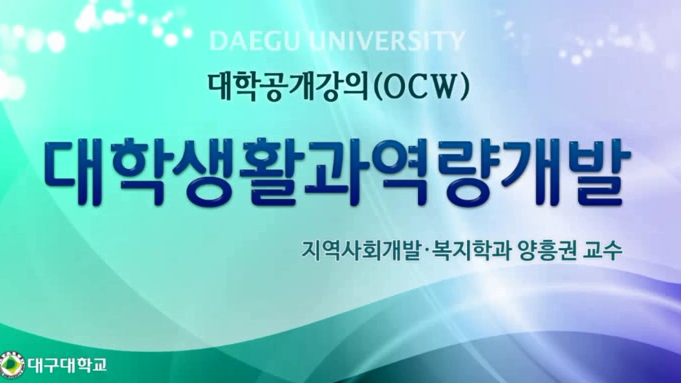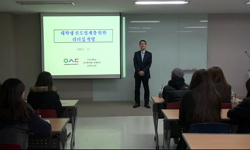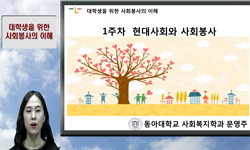The purpose of this study was to investigate the impacts of body muscle mass and bone density on ability to ambulatory ability college students in adulthood instead of elderly. The subjects were University Student (N=34). muscle mass, Bone Density and...
http://chineseinput.net/에서 pinyin(병음)방식으로 중국어를 변환할 수 있습니다.
변환된 중국어를 복사하여 사용하시면 됩니다.
- 中文 을 입력하시려면 zhongwen을 입력하시고 space를누르시면됩니다.
- 北京 을 입력하시려면 beijing을 입력하시고 space를 누르시면 됩니다.

대학생의 근육량과 골밀도가 보행능력에 미치는 영향 = The Effects of Ambulatory Ability on Body Muscle Mass and Bone Density in University Students
한글로보기https://www.riss.kr/link?id=A102634154
- 저자
- 발행기관
- 학술지명
- 권호사항
-
발행연도
2016
-
작성언어
Korean
- 주제어
-
등재정보
KCI등재
-
자료형태
학술저널
-
수록면
1245-1254(10쪽)
-
KCI 피인용횟수
0
- 제공처
-
0
상세조회 -
0
다운로드
부가정보
다국어 초록 (Multilingual Abstract)
The result indicated that arm muscle mass, leg muscle mass, trunk muscle mass, and whole body muscle mass of male students showed significant positive correlation (0.355~0.566) with walking distance (p<.05). However, it showed a significant correlation only in trunk bone mineral density among whole body mineral density (0.437, p<.05), and arm bone mineral density, leg bone mineral density, and whole body mineral density did not show any significant correlation. Maximum walking speed of male students did not show significant correlation with either muscle mass (0.029~0.140) or bone mineral density (0.091~0.306). In addition, among muscle mass of male college students, body muscle mass results were analyzed to be an important factor that can predict the walking distance from ambulatory ability by 32%.
In Conclusion, So far, muscle mass, muscle strength and bone density of elderly has been reported to affect the ambulatory ability. However, the conclusion of this study suggests that difference between body muscle mass also had a close relationship with the ambulatory ability of not only elderly but also college students in their adulthood as well. And it became clear that the whole body muscle mass is an important factor that can predict ambulatory ability among University students.
The purpose of this study was to investigate the impacts of body muscle mass and bone density on ability to ambulatory ability college students in adulthood instead of elderly. The subjects were University Student (N=34). muscle mass, Bone Density and Ambulatory Ability were measured in this study. Measured parts of the body were 4 part of the leg, arm, trunk and whole body. Ambulatory Ability was measured during the 6-minute Walking Test.
The result indicated that arm muscle mass, leg muscle mass, trunk muscle mass, and whole body muscle mass of male students showed significant positive correlation (0.355~0.566) with walking distance (p<.05). However, it showed a significant correlation only in trunk bone mineral density among whole body mineral density (0.437, p<.05), and arm bone mineral density, leg bone mineral density, and whole body mineral density did not show any significant correlation. Maximum walking speed of male students did not show significant correlation with either muscle mass (0.029~0.140) or bone mineral density (0.091~0.306). In addition, among muscle mass of male college students, body muscle mass results were analyzed to be an important factor that can predict the walking distance from ambulatory ability by 32%.
In Conclusion, So far, muscle mass, muscle strength and bone density of elderly has been reported to affect the ambulatory ability. However, the conclusion of this study suggests that difference between body muscle mass also had a close relationship with the ambulatory ability of not only elderly but also college students in their adulthood as well. And it became clear that the whole body muscle mass is an important factor that can predict ambulatory ability among University students.
목차 (Table of Contents)
- Abstract
- Ⅰ. 서론
- Ⅱ. 연구방법
- Ⅲ. 결과
- Ⅳ. 논의
- Abstract
- Ⅰ. 서론
- Ⅱ. 연구방법
- Ⅲ. 결과
- Ⅳ. 논의
- Ⅴ. 결론
- 참고문헌
참고문헌 (Reference)
1 신승민, "탄성저항운동이 노인의 평형성 및 보행기능에 미치는 영향" 계명대학교 스포츠산업대학원 2006
2 여남회, "중년여성들의 비만과 골다공증 예방과 치료를 위한 리모델링 운동처방 프로그램 개발" 한국운동생리학회 13 (13): 351-366, 2004
3 채원식, "롤러 신발과 조깅 슈즈 신발 착용 후 보행 시 지면반력의 형태 비교 분석" 한국운동역학회 16 (16): 101-108, 2006
4 전미양, "낙상 예방 프로그램이 양로원 여성 노인의 보행, 균형 및 근력에 미치는 효과" 서울대학교 대학원 2001
5 김아람, "골다공증 예방 및 개선을 위한 운동처방의 실증적 연구" 성신여자대학교 대학원 2011
6 Lexell, J., "What Is the cause of the ageing atrophy? Total number, size and proportion of different fiber types studied in whole vastus lateral is muscle from 15-to83-year-old men" 84 (84): 275-294, 1988
7 Huxham, F. E., "Theoretical considerations in balance assessment" 47 (47): 89-100, 2001
8 Fukagawa, N. K., "The relationship of strength to function in the older adult" 50 : 55-59, 1995
9 Mills, E. M., "The effect of low-intensity aerobic exercise on muscle strength, flexibility and balance among sedentary elderly person" 43 : 207-211, 1994
10 Gabell, A., "The effect of age on variability in gait" 39 (39): 662-666, 1984
1 신승민, "탄성저항운동이 노인의 평형성 및 보행기능에 미치는 영향" 계명대학교 스포츠산업대학원 2006
2 여남회, "중년여성들의 비만과 골다공증 예방과 치료를 위한 리모델링 운동처방 프로그램 개발" 한국운동생리학회 13 (13): 351-366, 2004
3 채원식, "롤러 신발과 조깅 슈즈 신발 착용 후 보행 시 지면반력의 형태 비교 분석" 한국운동역학회 16 (16): 101-108, 2006
4 전미양, "낙상 예방 프로그램이 양로원 여성 노인의 보행, 균형 및 근력에 미치는 효과" 서울대학교 대학원 2001
5 김아람, "골다공증 예방 및 개선을 위한 운동처방의 실증적 연구" 성신여자대학교 대학원 2011
6 Lexell, J., "What Is the cause of the ageing atrophy? Total number, size and proportion of different fiber types studied in whole vastus lateral is muscle from 15-to83-year-old men" 84 (84): 275-294, 1988
7 Huxham, F. E., "Theoretical considerations in balance assessment" 47 (47): 89-100, 2001
8 Fukagawa, N. K., "The relationship of strength to function in the older adult" 50 : 55-59, 1995
9 Mills, E. M., "The effect of low-intensity aerobic exercise on muscle strength, flexibility and balance among sedentary elderly person" 43 : 207-211, 1994
10 Gabell, A., "The effect of age on variability in gait" 39 (39): 662-666, 1984
11 Jette, A. M., "The Framingham Disability Study : II. Physical disability among the aging" 71 (71): 1211-1216, 1981
12 Scanaill, C. N., "Technology innovation enabling falls risk assessment in a community setting" 36 (36): 217-231, 2011
13 Wolfson, L., "Strengthening is a major factor in balance, gait and the occurrence offalls" 50 : 64-67, 1995
14 Kang, H. G., "Separating the effects of age and walking speed on gait variability" 27 (27): 572-577, 2008
15 Maki, B. E., "Postural control in the older adult. Geriatrics" 12 : 635-658, 1996
16 Spirduso, W. W., "Physical dimensions of aging" Human Kinetic 2005
17 Scott, S. H., "Interval forces at chronic running injury sites" 22 (22): 357-369, 1990
18 Scott, S. H., "Internal forces at chronic running injury sites" 22 (22): 357-369, 1990
19 Galley P. M., "Human movement" Churchill Livingstone 228-237, 1987
20 Olney, S. J., "Hemiparetic gait following stroke. Part I : Characteristics" 4 (4): 136-148, 1996
21 Lundebjerg, N., "Guideline for the prevention of falls in older persons" 49 (49): 664-672, 2001
22 Hausdorff, J. M., "Gait variability and fall risk in community-living older adults : a 1-year prospective study" 82 (82): 1050-1056, 2001
23 Prince, F., "Gait in the elderly" 5 (5): 128-135, 1997
24 Hausdorff, J. M., "Gait dynamics, fractals and falls : finding meaning in the stride-tostride fluctuations of human walking" 26 (26): 555-589, 2007
25 Ryerson, S., "Functional movement reeducation" Churchill Livingstone 1997
26 Judge, J. O., "Dynamic balance in older person: effects of reduced visual and proprioceptive input" 50 (50): 363-270, 1995
27 Bae, J. M., "Association of stress level with smoking amounts among university students" 27 (27): 1-10, 1994
28 Koretz, B. K., "Assessment of the geriatric patient : A practical approach" 8 (8): 35-41, 2001
29 Lohman, T. G., "Anthro-pometric Standardization Reference Manual" Human Kinetics Books 1992
30 O'Loughlin, P. F., "Ankle instability in sports" 37 (37): 93-103, 2009
31 Granacher, U., "An intergenerational approach in the promotion of balance and strength for fall prevention-A mini-review" 57 (57): 304-315, 2011
32 Frontera, W. R., "Aging of skeletal muscle : a 12-yr longitudinal study" 88 (88): 1321-1326, 2000
33 Gallagher, B., "A fall prevention program for the home environment" 6 (6): 157-163, 2001
34 강형숙, "21세기 스포츠와 건강관리" 홍경 2008
동일학술지(권/호) 다른 논문
-
- 한국체육과학회
- 김석희(Kim, Seok-Hee)
- 2016
- KCI등재
-
고령여성의 인지기능 차이가 낙상관련 위험요인에 미치는 영향
- 한국체육과학회
- 이소은(Lee, So-Eun)
- 2016
- KCI등재
-
운동형태의 차이가 아동기 BDNF, IGF-1, NGF에 미치는 영향
- 한국체육과학회
- 전용균(Jeon, Yong-Kyun)
- 2016
- KCI등재
-
일회성 내리막(downhill)과 오르막(uphill)운동이 당과 젖산, CK에 미치는 영향
- 한국체육과학회
- 권영우(Kwon, Yeung-Woo)
- 2016
- KCI등재
분석정보
인용정보 인용지수 설명보기
학술지 이력
| 연월일 | 이력구분 | 이력상세 | 등재구분 |
|---|---|---|---|
| 2026 | 평가예정 | 재인증평가 신청대상 (재인증) | |
| 2020-01-01 | 평가 | 등재학술지 유지 (재인증) |  |
| 2017-01-01 | 평가 | 등재학술지 유지 (계속평가) |  |
| 2013-01-01 | 평가 | 등재학술지 유지 (등재유지) |  |
| 2010-01-01 | 평가 | 등재학술지 선정 (등재후보2차) |  |
| 2009-01-01 | 평가 | 등재후보 1차 PASS (등재후보1차) |  |
| 2008-01-01 | 평가 | 신청제한 (등재후보1차) |  |
| 2007-01-01 | 평가 | 등재후보 1차 FAIL (등재후보1차) |  |
| 2006-01-01 | 평가 | 등재후보학술지 유지 (등재후보2차) |  |
| 2005-01-01 | 평가 | 등재후보 1차 PASS (등재후보1차) |  |
| 2004-01-01 | 평가 | 등재후보 1차 FAIL (등재후보1차) |  |
| 2003-01-01 | 평가 | 등재후보학술지 선정 (신규평가) |  |
학술지 인용정보
| 기준연도 | WOS-KCI 통합IF(2년) | KCIF(2년) | KCIF(3년) |
|---|---|---|---|
| 2016 | 0.66 | 0.66 | 0.67 |
| KCIF(4년) | KCIF(5년) | 중심성지수(3년) | 즉시성지수 |
| 0.66 | 0.66 | 0.593 | 0.18 |




 DBpia
DBpia





